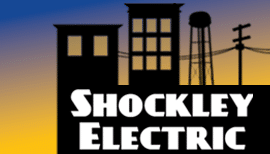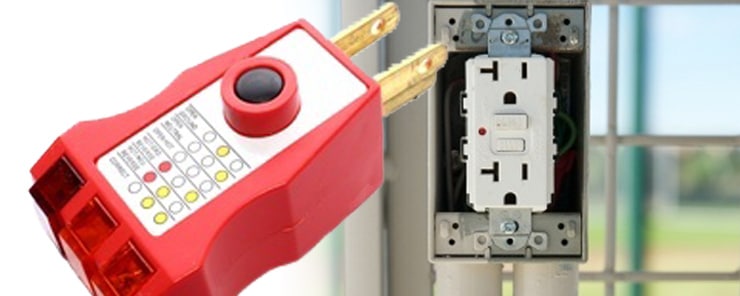Everything You Need to Know about How a Residential Electric Plug Works
We use electricity every day, in our homes, workplaces and just about everywhere we go in the course of a day. But have you ever really considered how those hair dryers, computers, televisions, stoves, and refrigerators get the electricity that makes them work?
It all comes down to the humble electrical plug, the ubiquitous connection point between the power supply and the electrical device that needs the power.
Components of the electrical plug
An electrical plug functions using metal prongs that create an electrical circuit, which conducts the current and powers up the device. Let’s take a closer look at each of these components and how they work together to make the plug function.
Metal plug prongs
The plug has two or three metal prongs (depending on the country and type of plug). Each prong has a specific job to do inside the plug, and they fit into the receptacle slots in the wall outlet.
- Live (Hot): This prong connects to the live or hot wire, which carries the electrical current from the power source.
- Neutral: The neutral prong connects to the neutral wire, which returns the current back to the source to complete the circuit.
- Ground: Many plugs also have a third prong, which looks like a round pin. This prong connects to a grounding wire, which provides a safety path for stray electrical currents, ensuring that any excess electricity does not electrify the metal of the appliance, creating an electrocution or fire hazard.
In other words, in the event of a surge, the ground wire ensures that the excess current and voltage have a place to go that is not your body or electronics. Three-prong plugs are the current standard, and homes built after 2008 are required to have them installed in all receptacles. In the typical modern home, just about every appliance with a metal case has a three-prong plug.
Creating an electrical circuit
Once the plug is inserted into the receptacle, the prongs contact the socket’s internal metal conductors, forming a complete electrical circuit. This connection allows electrical current to flow from the power source, through the hot wire, into the device, and back through the neutral wire.
Powering the device
Once the electrical circuit is formed, the power flows into the device’s internal wiring, which makes its components work.
Ensuring safe usage
Most plugs feature safety elements such as insulated prongs to prevent electric shocks from partially inserted plugs. Ground prongs and polarized plugs, where one prong is larger than the other, ensure that the hot and neutral wires are connected properly.
What are the 4 different kinds of plugs?
Plugs and their receptacles are standardized by the National Electrical Manufacturer’s Association (NEMA) and referred to by their NEMA configuration. The below plugs are most commonly encountered in our daily lives.
1. NEMA 5-15: Three prongs
These plugs have two flat blades (live and neutral) and one round pin (ground). If you look around your home and it was built after the 1960s, you’ll see these plugs and their corresponding receptacles everywhere. The 15-amp plugs are found on small appliances, lights and electronics. In older homes, you may see ungrounded receptacles that don’t accept the modern three-prong plug. While you can use an adapter to make these receptacles function, by doing so, you’re bypassing a critical safety feature of grounding. It is recommended in older homes to have a professional electrician update the wiring or replace the ungrounded receptacle with a GFCI.
2. NEMA 1-15: Two prongs
These two-pronged plugs only have a hot and neutral, with no ground prong. They come in two types: polarized, where one blade is slightly larger than the other, and non-polarized, where they’re the same size. If the plug is polarized, the neutral is the larger one, which ensures you cannot insert it into the hot side of the receptacle.
Double-insulated tools and appliances aren’t required to have a ground prong, so you’ll likely find polarized and non-polarized NEMA 1-15 plugs in your home. Things such as a variety of tools, vacuum cleaners and computer chargers will likely have only two prongs.
Check out our blog Should Every Electric Plug Have a Third Grounding Prong to learn more.
3. NEMA 14-30 (Four prongs), NEMA 10-30 (Three prongs)
An electric dryer will typically use a 30-amp, four-prong plug, especially in new construction. The plugs and specialized receptacles have two hot prongs, a neutral and a ground. Electric dryers use 240 volts for the dryer motor and heating function, but only 120 volts for any electronics, which is why they feature two hot prongs. However, if you install a new dryer in an older home, you may have a three-prong receptacle where your new dryer’s four-prong plug should go. In this case, you are allowed to use an older style NEMA 10-30 plug with three prongs.
The dryer should have instructions for how to install this cord configuration safely. However, a handy DIYer or a professional electrician can pull an equipment ground to the new dryer from the electrical panel and install a safer cord.
4. NEMA 14-50 (Four prongs)
Your electric stove plug is rated at 50 amps and 120/250 volts, and it features three straight vertical prongs for the hot and neutral and one ground prong. It features three straight vertical blades for the hot and neutral and one ground prong. Just like the electric dryer, elements like the clock, timer and fan use 120 volts, while the heating elements need the full 240 volts.
When installing a range plug and receptacle, it’s important the wiring be large enough for the current the range will draw. A professional electrician can ensure your breaker and wiring can accommodate a modern stove.
Electrical Receptacles vs. Outlets: What’s the difference?
Now that you understand more about the different types of plugs and their usage, a brief word about the differences between an electrical outlet and a receptacle. Simply, the receptacle is the part that accepts the plug prongs and sits ON the outlet.
The outlet provides the necessary current to the plug to relay it to the main appliance. In other words, the outlet is the whole setup of the box, and the receptacles are the prongs where you connect the plug. There can be single or multiple receptacles in one outlet.
Additionally, when people refer to the ”socket,” know that a socket can be an outlet, but not all the sockets are an outlet.
Standard electrical outlets
Standard receptacles are the regular outlets that are found throughout the rooms in your house. You can plug nearly all small household appliances, such as TVs, radios and computers into a standard outlet. These outlets supply 120 volts of electricity and will usually contain holes to accommodate two- or three-pin plugs.
GFCI and AFCI outlets
GFCI (Ground Fault Circuit Interrupt) receptacles are standard in kitchens and bathrooms, or any place where the area can get wet. They are recognizable because they have two narrow slots and a semi-circular hole. GFCI outlets have a built-in circuit breaker, so if water gets into the outlet, it shuts down without shorting out the rest of the home. GFCI outlets feature reset and test buttons.
Arc Fault Circuit Interrupter (AFCI) outlets are advanced electrical devices designed to enhance safety by detecting and protecting against arc faults, a type of electrical discharge that can occur in damaged or deteriorating wires and connections.
Check out our blog GFCI or AFCI: What are They and Which One is Right for You? to learn more.
Dryer and range receptacles
Electric dryers and ranges typically require more electricity than other appliances, so they are specifically designed for their intended purposes.
Other specialized outlets
Other outlets that may be installed into a home are USB, smart and tamper-resistant outlets. USB outlets provide a convenient way to charge devices without needing a separate adapter. Smart outlets allow for home automation and energy management features that can be monitored and controlled via a smartphone or voice command.
For example, they can be used to schedule lights to turn on or off at specific times or remotely turn off an appliance you left on. They can track power consumption and potentially help reduce electric bills. Tamper-resistant outlets are designed with spring-loaded shutters that close off the contact points of the outlet, preventing electric shock and injuries in households with small kids.
How Can We Help?
At Shockley Electric, we address important home safety issues such as power surges, faulty electrical wiring and potential fire hazards when we do electrical preventive maintenance in homes or commercial buildings. We are licensed, trained, and skilled in safety-proofing your home, and we are committed to the safety and well-being of our customers.
If you are experiencing electrical problems in your home or aren’t sure if your home is protected from electrical hazards, schedule an in-home estimate or appointment with us today. Fill out our form or call us now for a free estimate!

